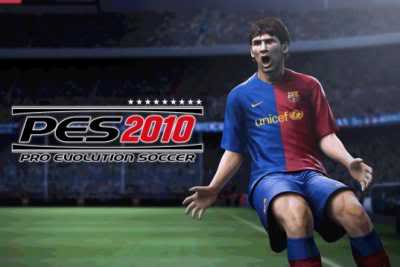
Even as a kid, I could always tell the difference between Japanese games and Western releases. While I certainly enjoyed Western games, their Eastern counterparts always seemed more “complete,” possessing a certain something that set them apart — we’d call it “polish” these days, but I didn’t know the right word for it at the time. I just knew that it felt like Japanese developers had a mastery of the hardware, while Western developers seemed to struggle to produce the same results.
I’m not sure when it happened, but at some point, it became harder and harder to tell the difference between Eastern and Western games — to the point where it’s nearly imperceptible these days. And nowhere is that better illustrated than in Pro Evolution Soccer 2010 at Tokyo Game Show.
For years, Konami’s signature sports title — the one worthy competitor to an EA Sports release, really — was the pinnacle of PS2 elegance. Games were fluid, flowing like real soccer matches. Passes required deft touches, while shots necessitated finesse. And around it all, players patrolled the pitch with smooth, realistic animations.
Then the PS3/360 generation hit. Suddenly, it felt like one of Konami’s top development teams — second only to Kojima Productions, probably — had forgotten everything they knew. And the problem doesn’t seem to be getting any better three years later. Sure, Pro Evolution Soccer 2010 looks spectacular when it’s not in motion — Spanish striker Fernando Torres and Argentinean midfielder Lionel Messi are dead ringers for the real thing. But once they hit the pitch, they move with herky-jerky, robotic motions, displaying none of their real-life mastery on the ball. On the other hand, EA Canada-developed FIFA 10 manages to capture some of Pro Evo’s former fluidity. In fact, if you showed me FIFA 10 and Pro Evolution Soccer 2010 side by side and asked me to choose which was the Western game and which was the Japanese title, I’d almost certainly say FIFA.

Pro Evolution Soccer’s not the only example of this phenomenon in Japanese development, but it’s certainly one of the most conspicuous. So what’s gone wrong with this generation in Japanese development? Is it simply a matter of diminishing time and resources? Or was this trend already in motion in the PS2 era? I’m not entirely convinced that a development culture simply “loses” it overnight. After all, the Dreamcast was far ahead of its time a decade ago, yet part of why it appealed to me so much at the time — and I’m talking as someone who’d been a hardcore Nintendo fan for nearly 15 years at that point — was how smooth and polished the games felt. The leap from Saturn to Dreamcast was even larger than the jump from PS2 to PS3, so I don’t think it’s a matter of Japanese developers being over their heads this generation. But it’s clear that something’s just not quite right.


